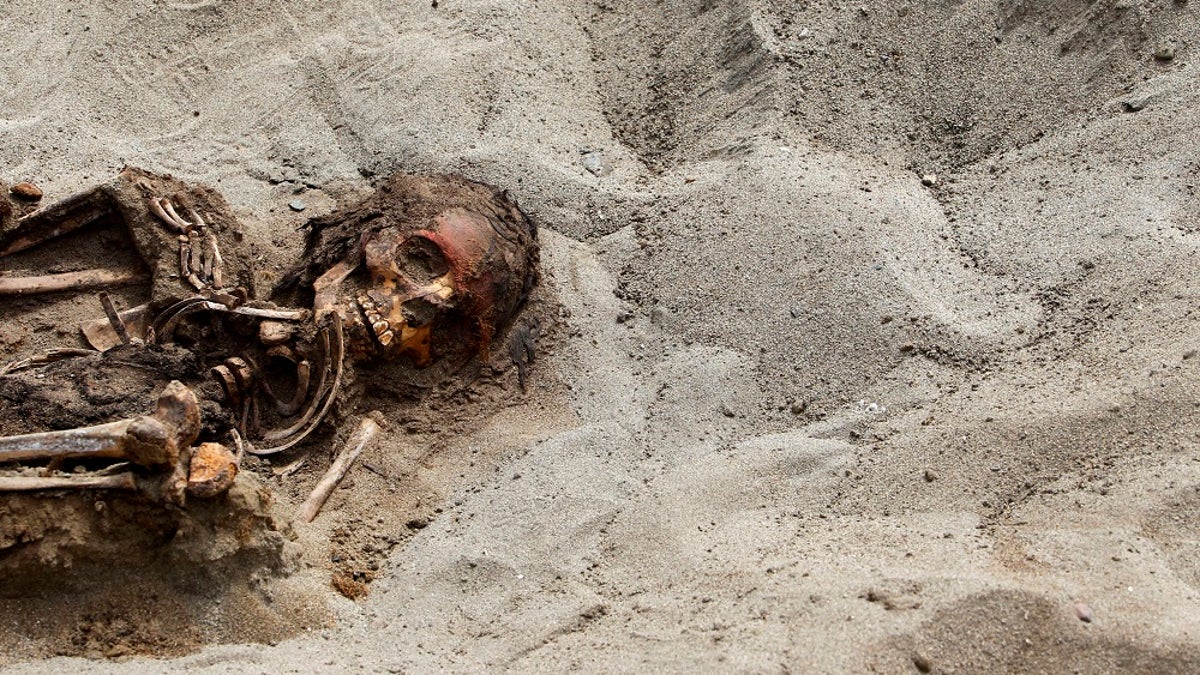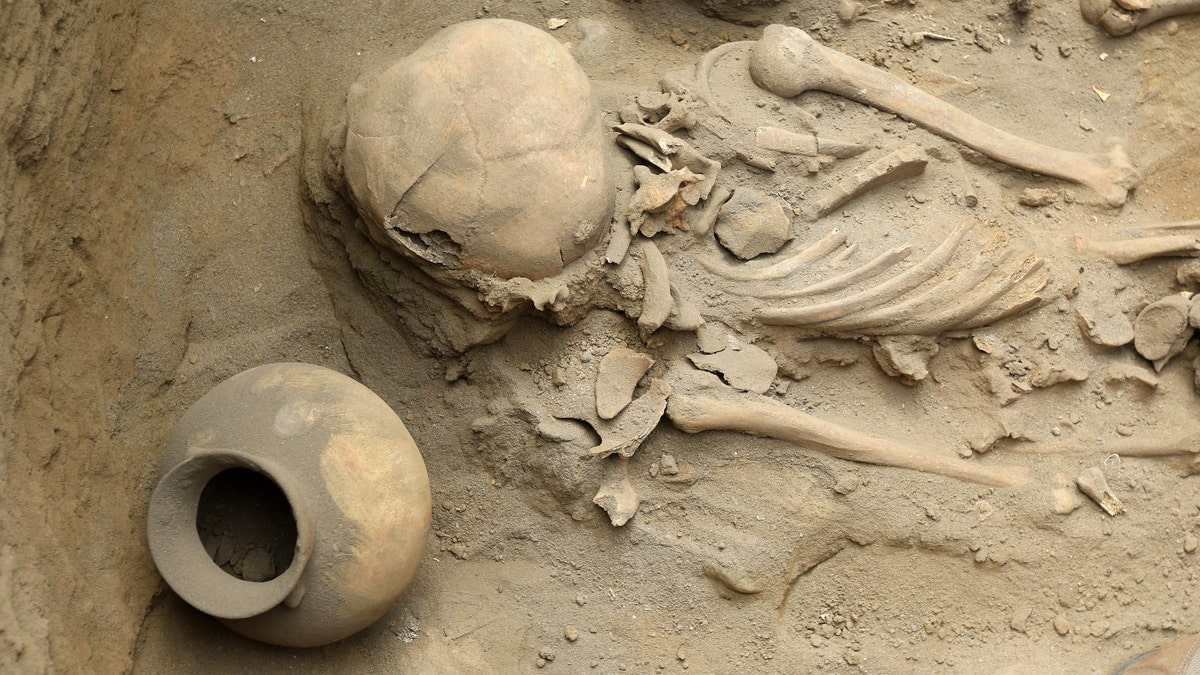
File photo - Archaeologists found the remains of 42 children and more than 70 young llamas in 2011, near Trujillo, Peru. By 2016 the number had grown to over 130 children and 200 young llamas. (REUTERS)
A mass child sacrifice in Peru that occurred over 500 years ago may have been due to an “El Nino” event. According to archaeologist Gabriel Prieto, the mass grave– which holds the skeletal remains of 132 children and dated between 1400 and 1450 A.D.– may have been made by the Chimu people in an effort to halt devastating weather.
“The sacrifice was made to the gods to stop the devastating rains and floods that was affecting their city (entirely built with mud bricks) and their sophisticated inter-valley irrigation canals,” Prieto, an assistant professor in archaeology at the National University of Trujillo, told Fox News. “The floods possibly destroyed their agricultural fields.”
The skeletons were uncovered at a site near Huanchaco, a small town on the northwest coast of Peru. Some of the adobe ruins of Chan Chan– the ancient capital of the Chimu people and at one time of the largest cities in the Americas– still stand in Huanchaco. The area has long been an attraction for archaeologists.
REMAINS OF 140 CHILDREN FOUND AT SITE OF WHAT MAY BE HISTORY'S LARGEST MASS SACRIFICE: REPORT
“The Chimu was not a tribe,” Prieto explained. “They were a large empire whose capital city [covered] more than 8 square miles. The city of Chan Chan had palaces, temples, storage facility areas, cemeteries, workshop neighborhoods, irrigation canals… Their territory extended over more than 620 miles along the North Coast of Peru.”

File photo - Ancient mass graves have also been discovered in the area. Here, an archaeologist works on an excavation site where human remains dating more than 1,500 years were found, in the northern coastal town of Huanchaco, in Peru on March 21, 2018. (CELSO ROLDAN/AFP/Getty Images)
The Chimus, the second largest empire of the ancient Andes, were eventually conquered by the Incas in 1470.
In 2011, An owner of a local pizza place alerted Prieto after his children found some dogs sniffing some human bones stuck in the sand in a nearby vacant lot.
EXCEPTIONALLY RARE 1,000-YEAR-OLD MUMMY FOUND IN PERU
“I thought it is going to be another looted cemetery of the Chimu period in the Huanchaco area,” Prieto said. “I never expected to find a children sacrificial ground.”

File photo - This picture is a view of human remains and pottery items dating more than 1,500 years, found at an excavation site in the northern coastal town of Huanchaco, in Peru on March 21, 2018. (CELSO ROLDAN/AFP/Getty Images)
The sheer number of child skeletons discovered at the site was shocking. The ages of the children (whose shroud–wrapped skeletal remains were found alongside 206 llamas) ranged between 5 and 14. They had been placed in unusual positions for Chimu burial– instead of sitting upright, they were curled up and on their backs. They were all sacrificed in the same grisly fashion: by a knife to the chest.
“The sacrificial procedure was to make a horizontal cut on the sternum to open up the chest cavity and possibly extract their heart,” Prieto said.
FOUND: ANCIENT PERUVIAN EXECUTIONER'S LOST HEAD
The cut locations were consistent, with no stop-starts of the blade to indicate hesitation on the killer’s part. The slayings were brutally systematic.
One huge clue the researchers are basing their assumption that the killings were made to appease the gods during an El Nino event was the huge slab of ancient, dried–up mud the children were buried in. Very deep mud is synonymous with the heavy rain that plagues Peru during El Nino. During a time when mass sacrifices in the area weren’t unheard of– four such events were believed to have been carried out between 1200 and 1520– it is not hard to assume that religious and political leaders agreed to such an act to stop the devastating rains.
CLICK HERE TO GET THE FOX NEWS APP
Prieto and his team are currently analyzing the feather headdresses and painted cloth found in the sacrificial grave.
